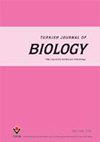MicroRNA-34a regulates brain-derived neurotrophic factor in an intracerebral hemorrhage model
IF 0.9
4区 生物学
Q3 BIOLOGY
引用次数: 2
Abstract
Intracerebral hemorrhages (ICHs) are devastating neurological events frequently resulting in a serious negative prognosis. The exact physiological and disease processes involved in ICHs are complex, but are thought to involve microRNAs (miRNAs), 22 nucleotide small noncoding RNAs that control a variety of normal physiological and disease processes. In this study, we show that a miRNA, miR-34a, regulates BDNF in a model of ICH injury. In particular, we assessed the impact of AM34a, an inhibitor of miR-34a, on the toxicity of thrombin-induced apoptosis and on BDNF-mediated signaling. We investigated the increased expression of miR-34a after an ICH-induced thrombin toxicity injury using a real-time polymerase chain reaction (RT-PCR) and evaluated miR-34a as a therapeutic target. Apoptosis was confirmed by 4',6-diamidino-2-phenylindole using terminal deoxynucleotidyl transferase-mediated digoxigenindUTP- biotin nick-end labeling (TUNEL). The number of apoptotic cells detected by TUNEL after ICH injury was decreased by AM34a. Additionally, the ICH injury model treated with AM34a had a significantly lower caspase-3 level. We performed western blot analyses for BDNF, phosphorylated Akt, and phosphorylated ERK. The levels of BDNF were significantly higher in samples treated with AM34a. Furthermore, the level of phosphorylated Akt and phosphorylated ERK were significantly higher under AM34a. In conclusion, we demonstrated a distinct miRNA expression pattern after an in vitro ICH injury model, and modulation of this pattern can have therapeutic potential. miR-34a antagomir reduced cell death and enhanced neurological recovery by activating the BDNF pro-survival pathway. This suggests that inhibiting miR-34a might be a potential therapeutic target in ICH.MicroRNA-34a在脑出血模型中调控脑源性神经营养因子
脑出血(ICHs)是一种毁灭性的神经系统事件,经常导致严重的不良预后。ICHs中涉及的确切生理和疾病过程是复杂的,但被认为涉及microRNAs (miRNAs),一种控制各种正常生理和疾病过程的22核苷酸小非编码rna。在这项研究中,我们发现miRNA miR-34a在脑出血损伤模型中调节BDNF。特别是,我们评估了miR-34a抑制剂AM34a对凝血酶诱导的细胞凋亡和bdnf介导的信号传导的毒性的影响。我们使用实时聚合酶链反应(RT-PCR)研究了ich诱导凝血酶毒性损伤后miR-34a的表达增加,并评估了miR-34a作为治疗靶点的作用。4′,6-二氨基-2-苯基吲哚通过末端脱氧核苷酸转移酶介导的双氧原indutp -生物素镍端标记(TUNEL)证实细胞凋亡。AM34a可减少ICH损伤后TUNEL检测到的凋亡细胞数量。此外,AM34a处理的脑出血损伤模型的caspase-3水平显著降低。我们对BDNF、磷酸化Akt和磷酸化ERK进行了western blot分析。在AM34a处理的样本中,BDNF水平显著升高。此外,在AM34a作用下,磷酸化Akt和磷酸化ERK的水平显著升高。总之,我们在体外脑出血损伤模型中发现了不同的miRNA表达模式,并且调节这种模式可能具有治疗潜力。miR-34a antagomir通过激活BDNF促生存通路减少细胞死亡并增强神经恢复。这表明抑制miR-34a可能是脑出血的潜在治疗靶点。
本文章由计算机程序翻译,如有差异,请以英文原文为准。
求助全文
约1分钟内获得全文
求助全文
来源期刊

Turkish Journal of Biology
BIOLOGY-
CiteScore
4.60
自引率
0.00%
发文量
20
审稿时长
6-12 weeks
期刊介绍:
The Turkish Journal of Biology is published electronically 6 times a year by the Scientific and Technological
Research Council of Turkey (TÜBİTAK) and accepts English-language manuscripts concerning all kinds of biological
processes including biochemistry and biosynthesis, physiology and metabolism, molecular genetics, molecular biology,
genomics, proteomics, molecular farming, biotechnology/genetic transformation, nanobiotechnology, bioinformatics
and systems biology, cell and developmental biology, stem cell biology, and reproductive biology. Contribution is open
to researchers of all nationalities.
 求助内容:
求助内容: 应助结果提醒方式:
应助结果提醒方式:


